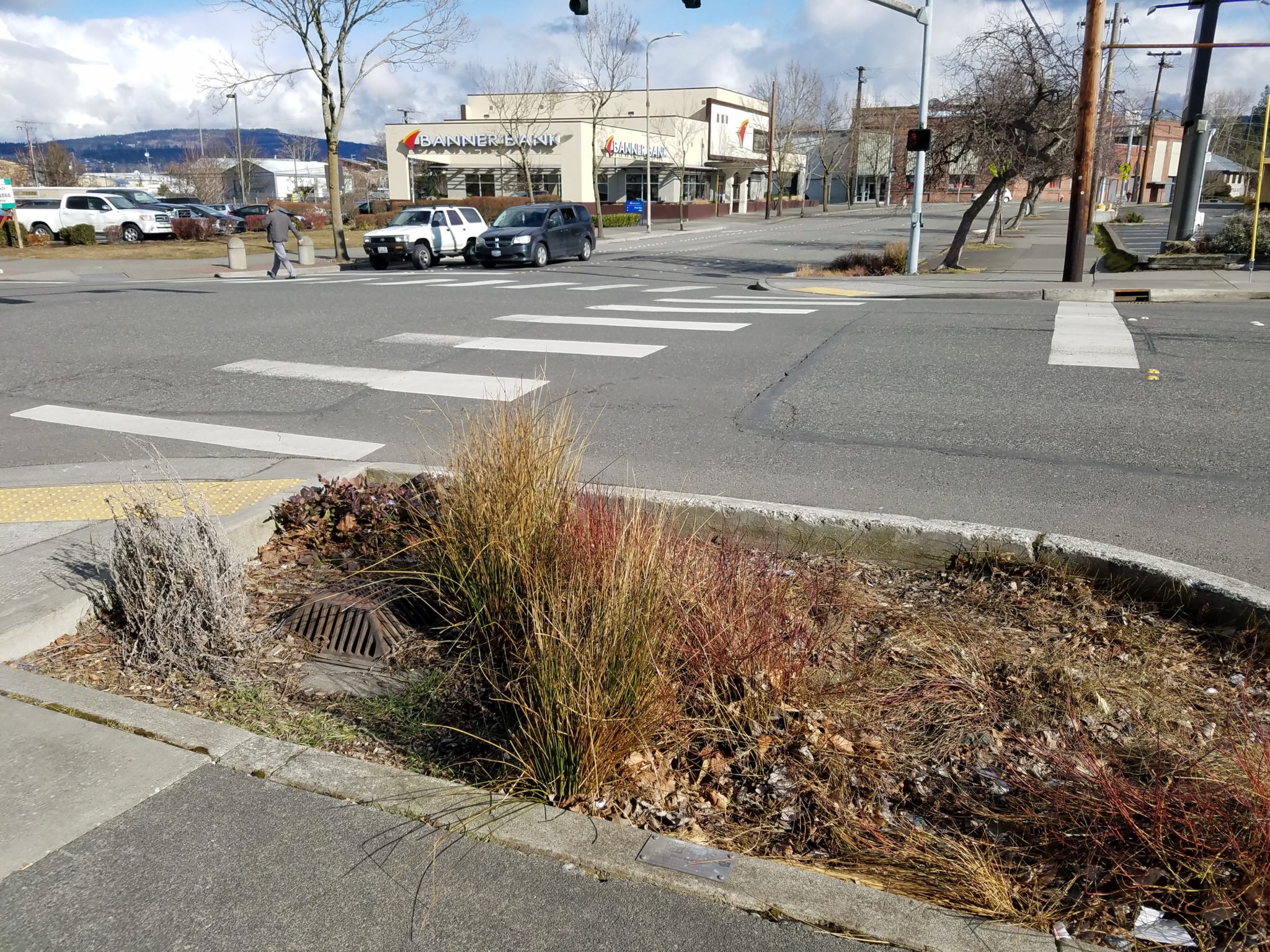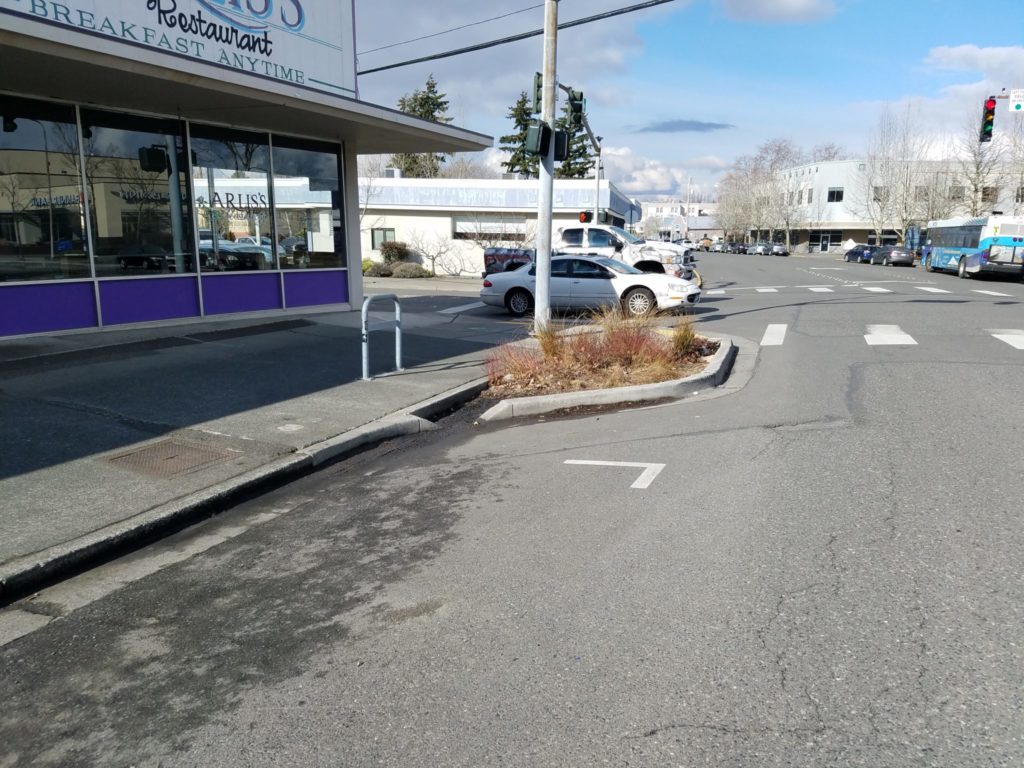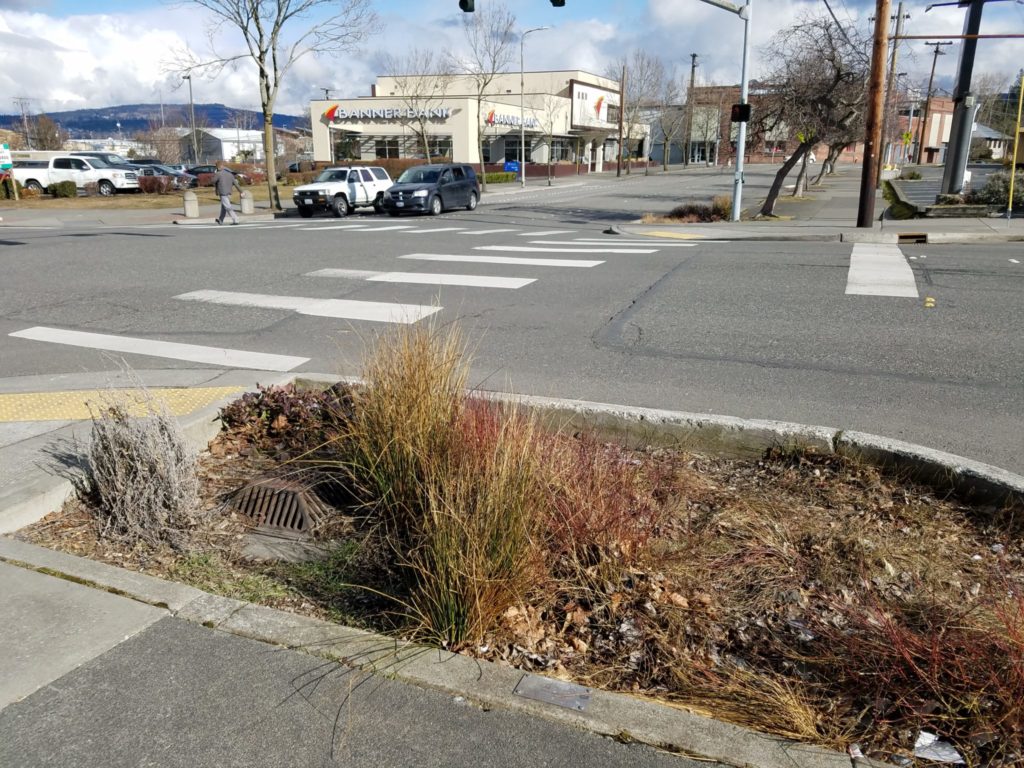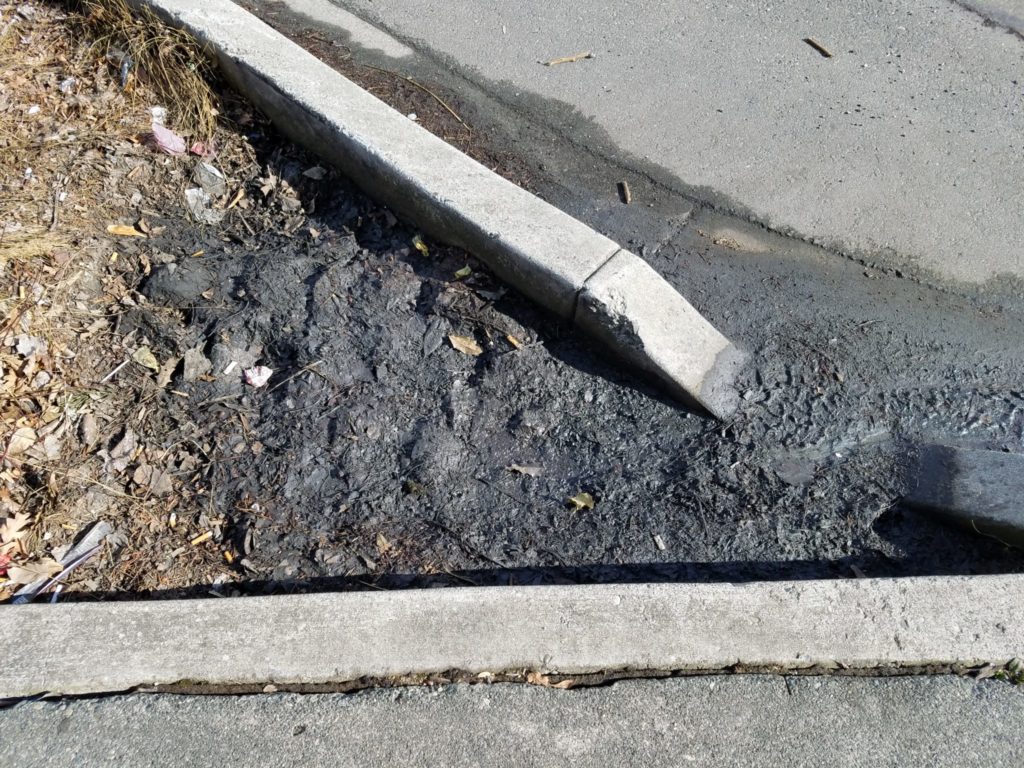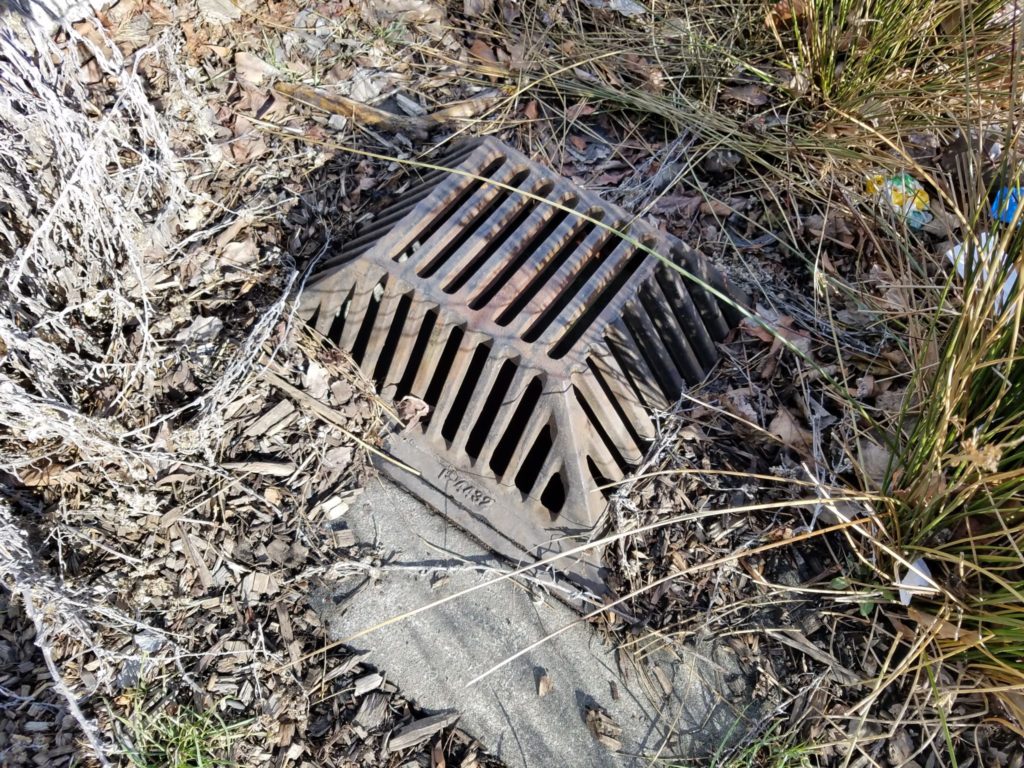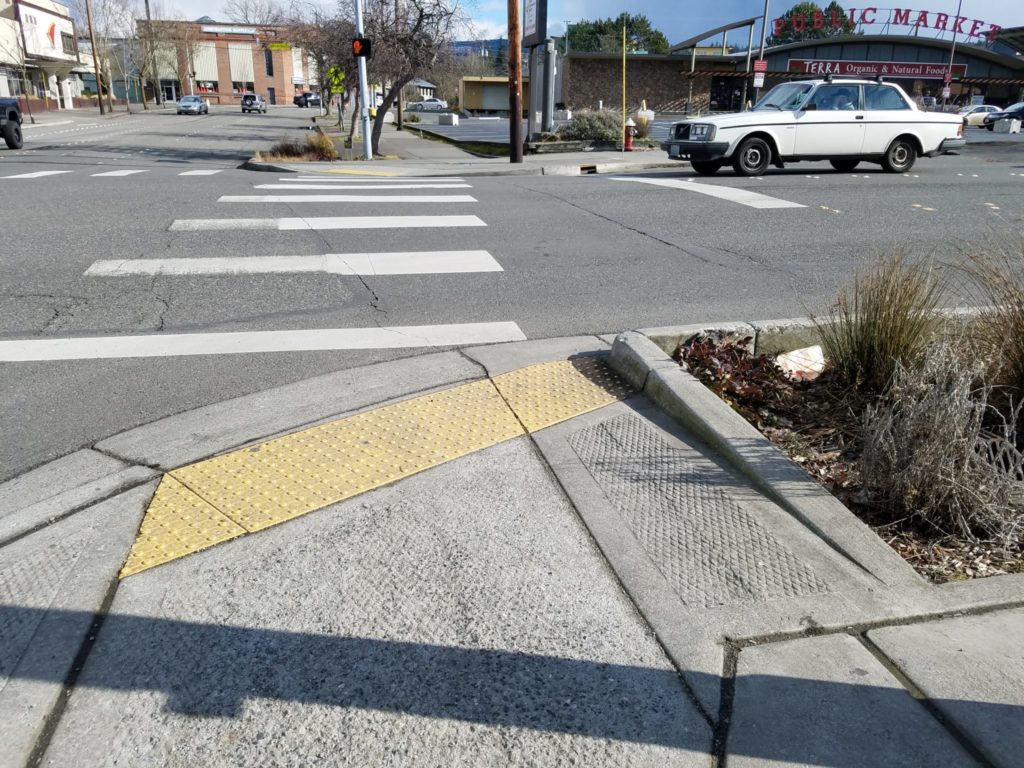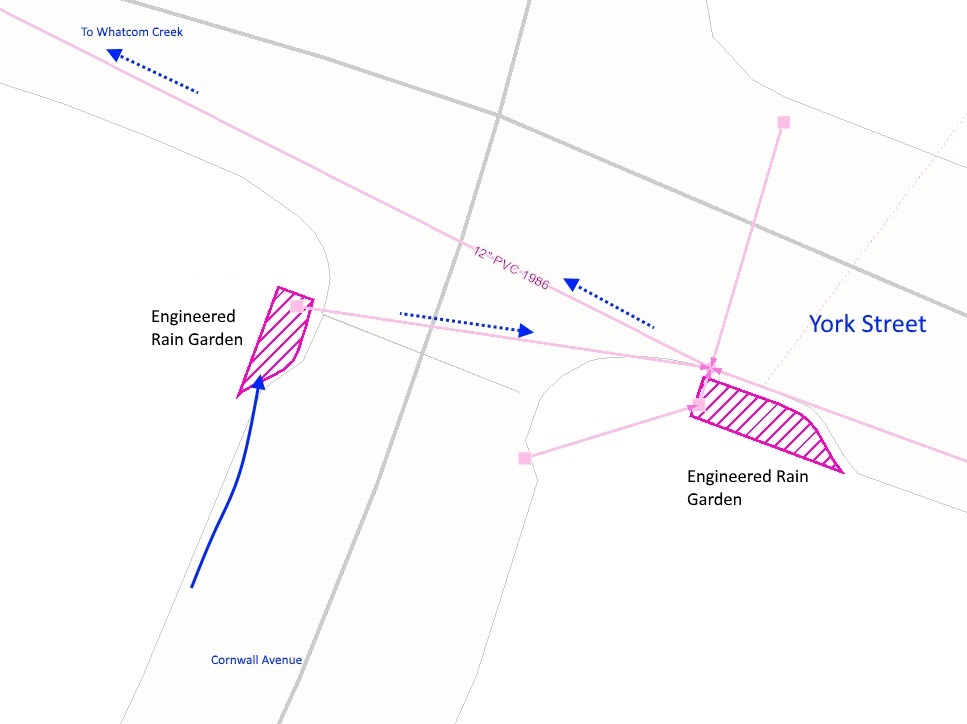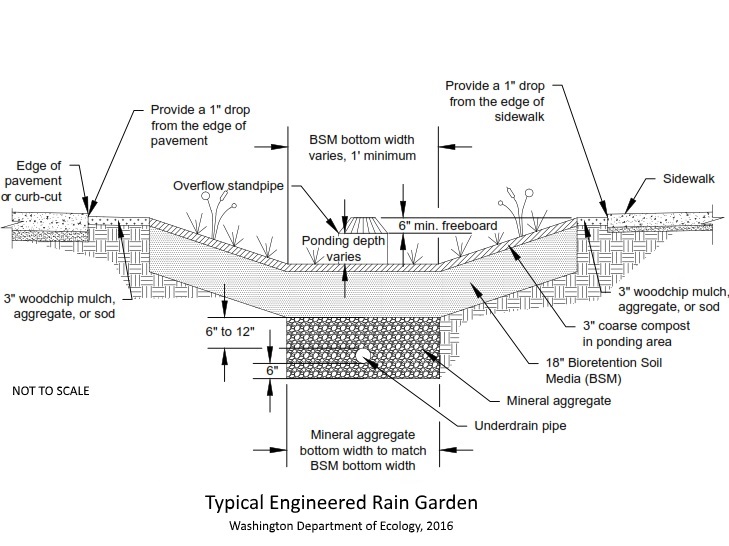Where is this located? It’s on the corner of Cornwall Avenue and Flora Street in front of Arlis’s Restaurant
What’s special about this place? While this stormwater used to flow untreated into Whatcom Creek, this engineered rain garden along with over 30 others, now treat and infiltrate stormwater from over 80 urban acres. These low-impact stormwater management techniques reduce the amount of money spent on large, centralized facilities. Pedestrian safety and road improvements at this intersection were combined with stormwater improvements as well. This site is one of nine Greenroads certified projects the City of Bellingham has been awarded. The Greenroads Project Rating Program challenges cities to exceed minimum environmental, social, and economic performance measures.
image gallery
select any photo to see a slideshow
